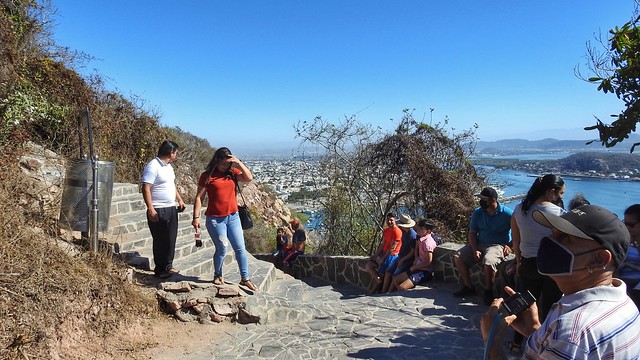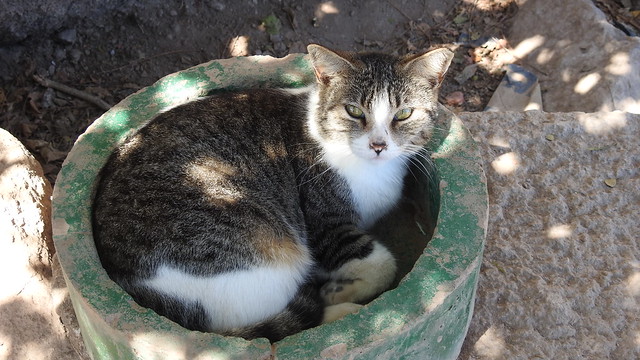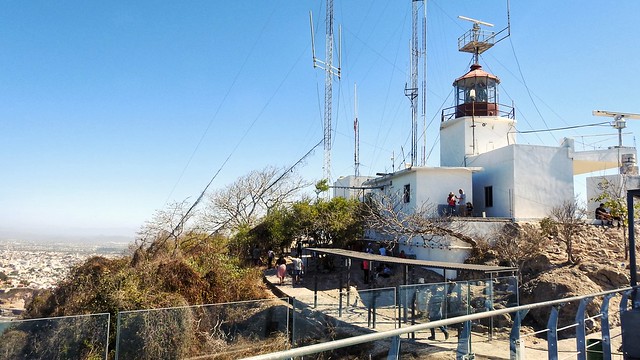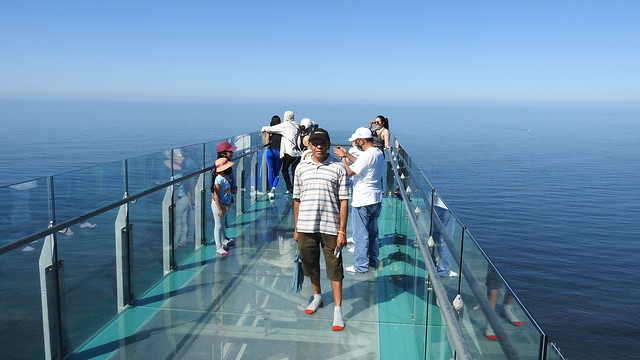 Hiking the short trail up to see Mazatlán's old lighthouse is a popular activity for both tourists and locals. It is about 2.4 kilometers up and back. Going up takes an average of a half-hour.
Hiking the short trail up to see Mazatlán's old lighthouse is a popular activity for both tourists and locals. It is about 2.4 kilometers up and back. Going up takes an average of a half-hour. A few scattered clouds of recent days have disappeared. We thought it would be an excellent day to do the climb to El Faro this morning. It's sometimes suggested to get an early start as there's little shade by midday and it can get a little hot.
We called an Uber at around 9:15. The island on which the lighthouse was built is now a peninsula as a breakwater for the port and provides a road half-kilometer road. The driver brought us right to the entrance.
The trail is well maintained and completely free. It starts as a large path with crushed rock although steeper sections have a stone walkway.
The last part is a stone stairway with 336 steps. At a few places along the way, the number is printed on risers and marks one's progress.




Oh, before I forget, I want to mention that cats are a part of the climb as well. As in other places in Mexico, open-range cats are a part of the area. Water and cat food are purposely brought along and placed in bowls along the path. These cats are free not feral. They aren't wild but just community-owned. They are friendly and appreciate attention when hikers are stopping to catch their breaths.

At the top, one is afforded a great view in all directions, but of course, looking back over Mazatlán is a favourite place for photos and selfies.
A new attraction is a glass-floored structure extending out beyond the cliff where waves crash against the hill below. It wasn't particularly large or scary. It does cost 20 pesos now. This pays for a collector who ensures that no one 'hogs' their time on the precious space. The experience was surely worth the equivalent of a US $1 bill.
The lighthouse dates from the 1870s but today operates on electricity. At the time it was built, it was considered the world's first due to the record elevation of its base above sea level. Even today, the beam of light can be seen 30 nautical miles out into the Pacific Ocean for navigation purposes.








